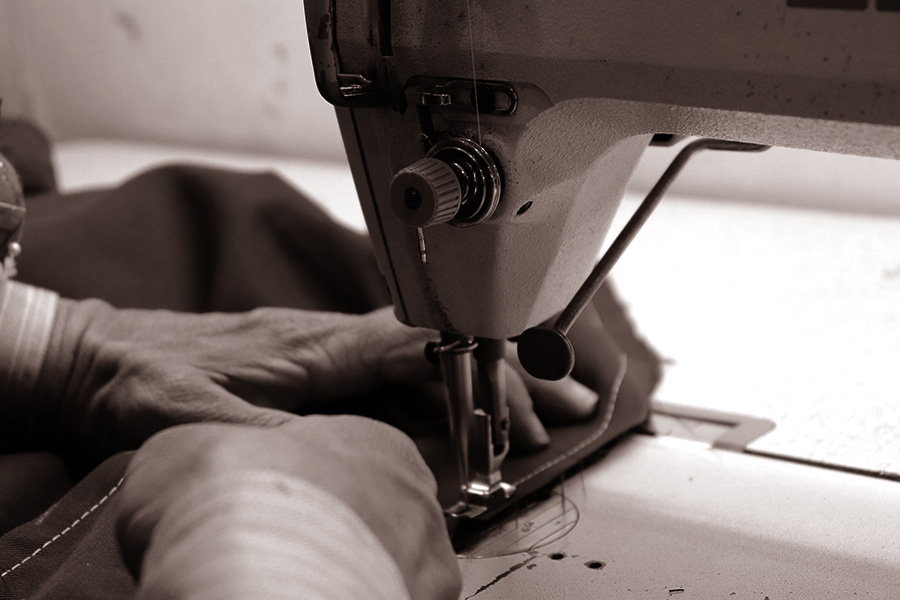Find the most effective Tailor Perth: Premium Tailoring for Distinctive Design
Find the most effective Tailor Perth: Premium Tailoring for Distinctive Design
Blog Article
Recognizing the Tailoring Refine: From Fabric Choice to Last Fitting for the Perfect Closet
The tailoring procedure is a complicated interplay of art and scientific research, starting with the essential decision of fabric option and finishing in the accurate modifications of final installations. Each textile type brings unique top qualities that affect not just the aesthetic appeal but likewise the garment's long life and viability for numerous celebrations. Recognizing the subtleties of tailoring strategies can boost one's closet to unmatched levels of refinement. As we check out these elements even more, one should think about how also the smallest information can dramatically influence the general outcome of one's individual style.
Significance of Textile Option
Picking the best material is crucial in the tailoring process, as it directly affects the comfort, toughness, and total aesthetic of the last garment (tailor perth). The selection of material sets the structure for the garment's style, performance, and performance. Various textiles possess one-of-a-kind homes, such as stretch, weight, and breathability, which can substantially influence just how the garment drapes and fits the body
Moreover, material option affects the garment's durability and ease of care. Premium textiles can hold up against damage, keeping their appearance and structure with time, while lower-quality materials might bring about pilling or fading. Furthermore, the ideal material adds to the garment's capacity to shift across occasions and seasons, thereby boosting convenience.
A customized piece made from an appropriate fabric not just showcases workmanship however also boosts the wearer's confidence. Comprehending the nuances of fabric option is paramount for any kind of tailoring undertaking. It makes certain that the end product not just meets the visual wishes of the customer however also lines up with functional demands, thus achieving a harmonious balance in between form and feature in the customized closet.
Sorts Of Fabrics and Their Usages
Understanding the numerous types of textiles available is essential for making notified decisions during the customizing process. Each material possesses unique characteristics that determine its viability for particular garments and events.
Its versatility enables it to be tailored right into every little thing from tee shirts to outfits. Its all-natural elasticity helps garments preserve form over time.
Silk radiates high-end and is light-weight, making it best for eveningwear and delicate shirts; however, it needs mindful handling because of its fragility. Bed linen, with its distinctive surface, is a prominent selection for cozy environments, offering a crisp and airy feeling, yet it wrinkles easily, which may influence the garment's appearance.
Artificial fabrics, such as polyester and nylon, offer resilience and resistance to creases, making them suitable for day-to-day wear and active apparel. Understanding these fabric types and their residential or commercial properties permits better decision-making, making sure that each customized piece not just fits well yet likewise lines up with the designated purpose and celebration.
The Tailoring Methods Clarified
The art of customizing counts on a range of methods that change textile right into well-fitted garments. Central to this process is pattern drafting, where a dressmaker produces layouts based upon the customer's measurements and desired design. This preliminary step makes sure that the garment will fit the user appropriately before any kind of reducing happens.
Once patterns are developed, cutting strategies enter into play. Precision is paramount as inaccuracies can cause misfitting garments. Tailors frequently use various cutting techniques, such as single-layer reducing for intricate designs and multiple-layer cutting for efficiency on typical patterns.
Basting is one more important technique, permitting tailors to momentarily stitch textile items with each other for an initial fitting. This approach provides the possibility to evaluate the drape and overall silhouette before last stitching.
Seaming techniques, consisting of flat-felled joints and French joints, improve the garment's resilience and visual appeal. Tailors likewise employ strategies such as interfacing and padding to give structure and form to certain areas, like shoulders and collars.
Lastly, completing strategies, including hemming and edge completing, make certain the garment's longevity while supplying a sleek look. Together, these methods create the foundation of efficient tailoring, resulting in charming, custom-fit clothing.
Suitable Adjustments and Considerations

Trick factors to consider include the shoulder fit, which should neither droop neither limit activity, and the sleeve length, which should permit comfy arm movement while preserving a refined appearance. Additionally, changes at the waistline can fine-tune the shape, with alternatives to let out or absorb textile as needed.
The rise of pants is an additional essential variable; it ought to sit pleasantly over the hips without triggering pain, permitting convenience of movement. Hemming sizes for both pants and skirts need to mirror the user's recommended design while respecting percentages.

Preserving Your Tailored Clothes
Always follow the care tag guidelines, which might advise completely dry cleaning for delicate fabrics or machine cleaning for even more long lasting materials. Stay clear of frequent laundering, as this can put on down the material and change the garment's shape.
Storage space is just as crucial; usage padded hangers for coats and coats to keep shoulder framework, and store pants folded up neatly or hung to stop creasing. Protect garments from direct sunlight, which can discolor colors and damage her response fibers.
In addition, regular assessments for small fixings can stop larger concerns. Examine for loose switches, fraying joints, or indications of moth damage, addressing these troubles quickly to maintain the garment's stability.
Finally, think about seasonal turning. Using tailored items in small amounts permits materials to recover, expanding their lifespan. By carrying out these maintenance strategies, you can make sure that your tailored garments stay as pristine as the day you initially wore them, boosting your excellent wardrobe for several years to come.
Final Thought
The tailoring process, incorporating material selection, knowledgeable strategies, and exact fitting modifications, plays a crucial duty in developing garments that boost both comfort and style. Recognizing the value of maintenance prolongs the life of customized garments, solidifying their worth in a well-curated closet.
Choosing the ideal textile is important in the tailoring process, as it directly affects the convenience, sturdiness, and overall aesthetic of the final garment. The selection of textile establishes the foundation for the garment's capability, efficiency, and design. Different materials have special residential properties, such as stretch, breathability, and weight, which can considerably influence exactly how the garment drapes and fits the body.
The her response art of tailoring counts on a selection of methods that change textile into well-fitted garments.The tailoring procedure, including material selection, competent methods, and exact fitting changes, plays a crucial duty in producing garments that boost both convenience and style.
Report this page